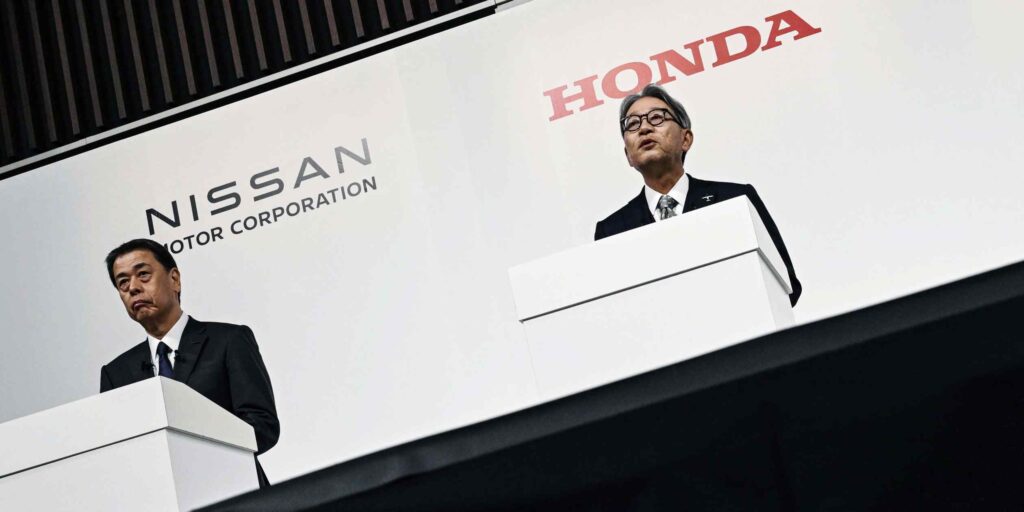Merger talks between Honda Motor and Nissan Motor turned out to be short-lived, with the latter this week rejecting the deal after the two failed to agree on the valuation of the carmakers under a holding company.
Despite the merger having the potential to create the world’s third-largest automaking group, with negotiations suspended, the companies will have to find another growth strategy amid intensifying competition in the electric vehicle segment, which is seeing the rapid rise of Chinese brands.
Why did Nissan put a stop to the merger talks, and what will happen to the automaker now? Here is a selection of stories to bring you up to speed on the latest developments.
An alliance with Honda could have saved Nissan as it faces its third existential crisis amid a slump in business. Experts have warned the carmaker must revamp its operations in the U.S., where its lack of large cars and hybrids has forced it to resort to low pricing to move the metal. Read more.
In December last year, Honda and Nissan announced plans to set up a joint holding company by August 2026, moving forward with electrification and software integration to catch up with foreign rivals. Mitsubishi Motors, in which Nissan is the top shareholder, was also approached about the deal. Read more.
What made the merger unworkable? Nissan entered negotiations thinking it would be a marriage of equals, but Honda proposed turning its partner into a subsidiary. The rift, which the two sides were unable to bridge, appeared early this year. Read more.
With Honda out of the picture, Nissan may be contacted by Taiwanese electronics manufacturer Foxconn, which is interested in making EVs. Foxconn, best known as an iPhone assembler, had been working behind the scenes to acquire a stake in Nissan until news of the merger came out. There are a number of possible scenarios for how Foxconn could approach the automaker for a potential deal. Read more.

